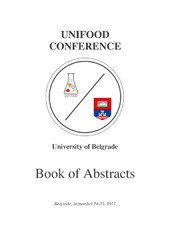Приказ основних података о документу
The effect of phytohormones application on morphological and biological properties of Thymus pannonicus all
| dc.creator | Filipović, Vladimir | |
| dc.creator | Ugrenović, Vladan | |
| dc.creator | Maksimović, Zoran | |
| dc.creator | Dimitrijević, Snežana | |
| dc.creator | Popović, Vera | |
| dc.creator | Mihajlovski, Katarina | |
| dc.creator | Milić, Marija | |
| dc.date.accessioned | 2023-05-25T13:29:50Z | |
| dc.date.available | 2023-05-25T13:29:50Z | |
| dc.date.issued | 2021 | |
| dc.identifier.isbn | 978-86-7522-066-4 | |
| dc.identifier.uri | http://TechnoRep.tmf.bg.ac.rs/handle/123456789/6424 | |
| dc.description.abstract | This study has explored the effect of three phytohormones application, based on α-naphthyl acetic acid, named INCIT 1, INCIT 8 and INCIT K, on the root system growing potential and rooting stimulation of Thymus pannonicus All. cuttings. This plant is highly reputable not only in a folk medicine, but also recognized in the business sector, due to a multiple uses and beneficial effects on human health. The research was located in Veliko Središte, Vršac (Serbia) and conducted in May, 2021. The cuttings were dipped in a powdered formulation of phytohormones and placed in plastic containers pre-filled with commercial substrate. The phytohormone-free variant was taken as a control. After 2 months, the cuttings were removed and the morphological and biological properties (polyphenols content and antioxidant activity by DPPH radical and FRAP method) were measured. Based on the morphological results, all of treated samples showed satisfactory behaviour, whereby the most suitable phytohormone to stimulate the growth of cuttings was INCIT 8, in which the average weight of the aboveground vegetative part of the plant and root mass were higher for more than 60% in relation to the control; the number of roots were about 25% higher, whereby the mass of the whole plant was almost 3 times increased. Considering the biological activities in a 5% aqueous infusions of the samples, it was found that the polyphenols content and the antioxidant activity were lowered in treated samples, with relation to the control, excluding the sample INCIT 8 where the FRAP value was slightly increased, while the inhibition of DPPH radicals was higher by around 15%. The applied phytohormone treatment may ensure economically viable yields of standard or even improved plant quality. In the following period, it is expected that all of treated adult plants will have a higher content of biologically active substances. | sr |
| dc.language.iso | en | sr |
| dc.publisher | University of Belgrade | sr |
| dc.relation | info:eu-repo/grantAgreement/MESTD/inst-2020/200003/RS// | sr |
| dc.relation | info:eu-repo/grantAgreement/MESTD/inst-2020/200011/RS// | sr |
| dc.relation | info:eu-repo/grantAgreement/MESTD/inst-2020/200135/RS// | sr |
| dc.relation | info:eu-repo/grantAgreement/MESTD/inst-2020/200011/RS// | sr |
| dc.rights | openAccess | sr |
| dc.rights.uri | https://creativecommons.org/licenses/by/4.0/ | |
| dc.source | UNIFood Conference | sr |
| dc.subject | Thymus pannonicus | sr |
| dc.subject | α-naphthyl-acetic acid | sr |
| dc.subject | Seedling morphology | sr |
| dc.subject | Polyphenols | sr |
| dc.subject | Antioxidant activity | sr |
| dc.title | The effect of phytohormones application on morphological and biological properties of Thymus pannonicus all | sr |
| dc.type | conferenceObject | sr |
| dc.rights.license | BY | sr |
| dc.citation.spage | 151 | |
| dc.identifier.fulltext | http://TechnoRep.tmf.bg.ac.rs/bitstream/id/17181/bitstream_17181.pdf | |
| dc.identifier.rcub | https://hdl.handle.net/21.15107/rcub_technorep_6424 | |
| dc.type.version | publishedVersion | sr |

